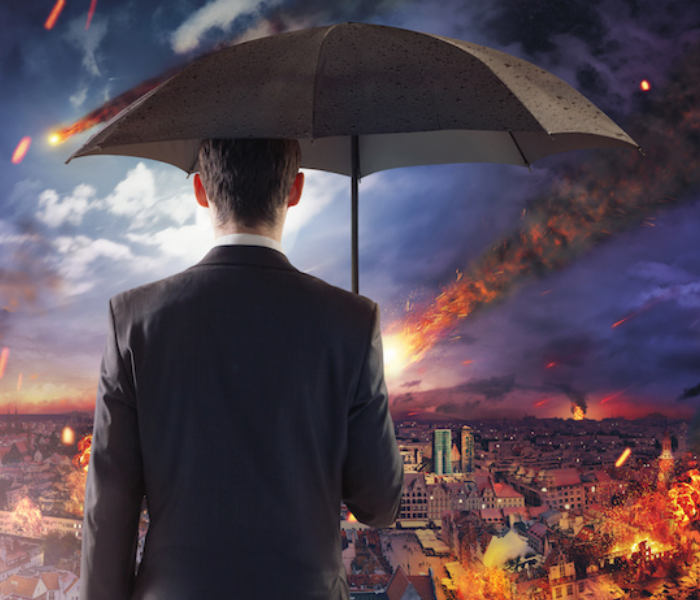Recent Fire Damage Posts
Business Fire Prevention Tips
9/19/2023 (Permalink)
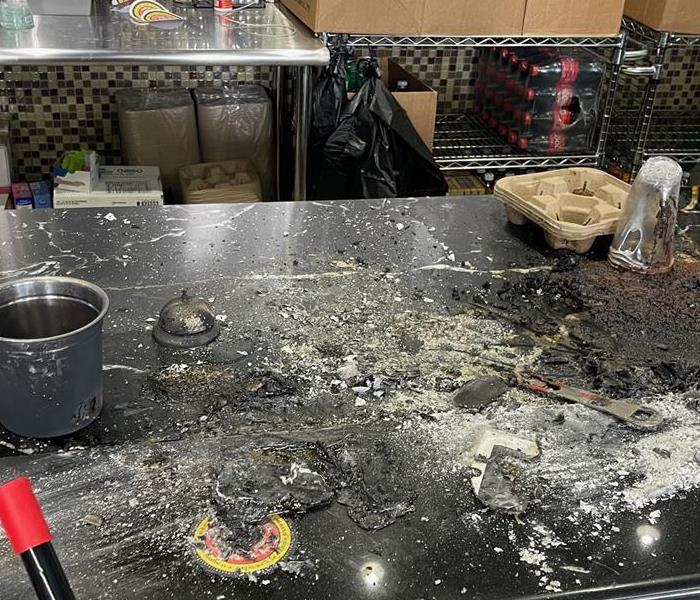 Soot from a fire
Soot from a fire
Fires can have a devastating effect on your home or property. Regardless of the size or scope of the fire, it can lead to significant damage. Here are some tips to help prevent fire.
When cooking:
- Stay in the kitchen whenever something is frying, grilling or boiling.
- Keep flammable objects at least 3 feet away from the stove top
When heating your home:
- Never leave a space heater or a fireplace unattended. Make sure to turn off space heaters and extinguish all embers before leaving rooms.
Other leading home fire risks:
- Switch to flameless candles
- Electrical equipment is the third major cause of home fires and the leading cause of property damage.
How to make a fire escape plan:
- Have at least 2 exits of each room
- Establish a designated meeting area outside safe from the building.
Preventing fires at home is important year-round, but Fire Prevention Month serves as a great reminder that simple steps can make a big difference in keeping your family safe.
Do not hesitate to contact SERVPRO® if your home is affected by fire or smoke damage.
What is soot and is it dangerous?
8/12/2022 (Permalink)
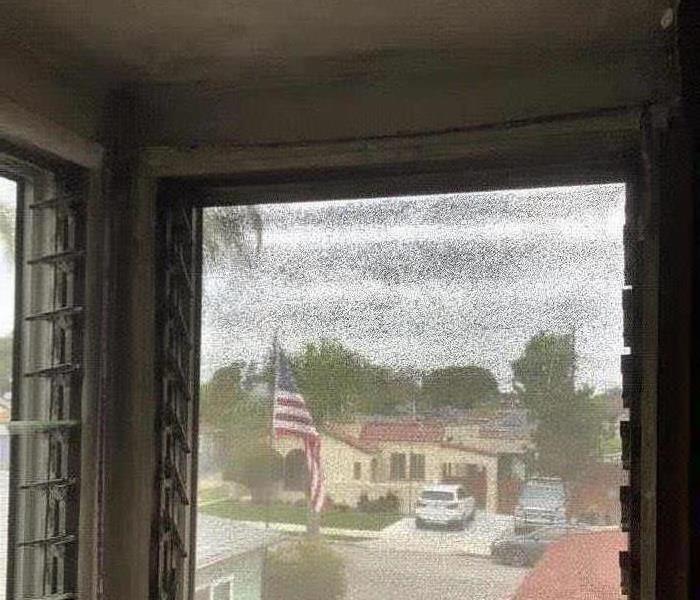 Don't let soot get you. For professional smoke remediation or fire damage repair, contact your SERVPRO Northwest Long Beach today.
Don't let soot get you. For professional smoke remediation or fire damage repair, contact your SERVPRO Northwest Long Beach today.
Following a house fire, the danger unfortunately doesn’t stop once the flames have been put out. Soot may have spread to your entire home, posing a threat to your health and the building.
What is Soot from Fire and What Should You Know About It
Soot is made of tiny carbon particles created by incomplete combustion of fossil fuels (wood, oil, coal, and more). Soot contains lots of acids, as well as chemicals, metals, soils, and dust. These particles leave an ugly sight and foul smell. During a fire, soot spreads to the whole house, attaching to surfaces. Thus, the acidic properties of soot can further damage your home and indoor air quality if the soot is not removed immediately.
Soot can inhabit your home even if there wasn’t a fire. Excessive use of candles can lead to soot buildup, so make sure to use them sparingly (they are also a fire risk). Fireplaces can release soot as well if they’re not ventilated enough. Furnaces are also a source of soot contamination when they produce a puff back.
Outdoors, soot is released into the environment when fossil fuels are burned for industrial purposes. The chemical compounds of soot hurt the ecosystem considerably. Soot in your home acts similarly, damaging the indoor air quality in addition to leaving behind bad odors and stains.
What are the dangers of soot exposure?
Statistics show that particle exposure leads to around 20,000 deaths in the U.S. each year. Soot-related diseases are the culprit of many of them. Moreover, soot exposure causes 300,000 asthma attacks and two million lost workdays annually due to respiratory problems.
Soot can enter your body through inhalation, ingestion or via the skin and eyes. These toxic particles can cause breathing issues, including asthma, bronchitis, coronary heart disease, and even cancer. Infants, the elderly, and those who already have breathing problems are the most affected.
To avoid the health risks of soot exposure after a home fire, make sure that all soot-affected areas are properly cleaned and sanitized.
How to clean up soot
Your house likely holds many chemicals, such as plastics, foams, carpets, wood products, and synthetic fabrics. Soot derived from these materials leads to health hazards that make fire restoration a dangerous and difficult task. Even if the fire was small, soot particles can invade your whole property through the HVAC system.
When cleaning soot, wearing safety equipment to protect the lungs, skin, and eyes is essential in reducing soot exposure dangers. Specialized techniques such as air scrubbing and thermal fogging are also needed to restore indoor air quality following a fire. A dust mask and a household cleaner are not enough to clean up soot! Removing soot thoroughly requires professional tools, knowledge, and expertise. Experts can properly clean soot and odors from your entire home to ensure it is safe to inhabit.
For professional smoke remediation or fire damage repair, contact your SERVPRO Northwest Long Beach today.
Extension Cord Safety Tips
8/12/2022 (Permalink)
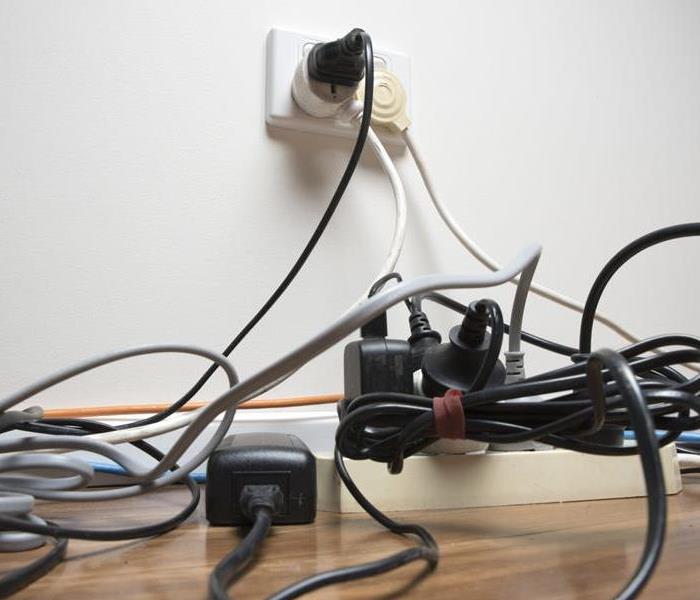 For professional smoke damage repair or fire damage clean-up, contact SERVPRO Northwest Long Beach today! 562-506-4992
For professional smoke damage repair or fire damage clean-up, contact SERVPRO Northwest Long Beach today! 562-506-4992
Does your home have too many electrical devices and too few outlets to plug them all? Chances are you’re using extension cords to power up your electrical devices. However, electrical cords can become fire hazards when used improperly. Follow these tips to use extension cords safely:
- Purchase only cords that are approved by an independent testing laboratory, such as Underwriters Laboratories (UL).
- Don’t overload extension cords with too many appliances. The cord can overheat and possibly cause a fire. Plug only one minor applianceinto an extension cord.
- Plug major appliances, such as refrigerators, dryers, and washers, directly into a wall receptacle outlet.
- Check the maximum capacityof the extension cord and appliance or tool you’re using, and make sure you don’t exceed it.
- Fully insertthe plug of an extension cord (or any plug for that matter) into an outlet.
- Unplug extension cordswhen you’re not using them. To safely unplug an extension cord, pull on the plug, NOT on the cord.
- Use extension cords only temporarily. Don’t substitute extension cords for permanent wiring.
- Don’t run extension cords through water or snowto avoid the high risk of electric shock. Keep water away from extension cords.
- Don’t run cords through ceilings, walls, doorways, or floors. Never place cords under carpets, either. Covered cords allow little heat to escape and pose a fire hazard.
- Keep cords out of the path of foot trafficto prevent tripping. Don’t leave cords dangling anywhere where they can be pulled down and tripped over.
- If you use too many extensioncords, there may be too few outlets in your home. Have a qualified electrician install additional outlets to avoid using excess extension cords.
- Avoid chaining multiple extension cords– plug extension cords directly into mounted electrical receptacles. Use extension cords that are long enough for your needs.
- Never use indoor extension cords outdoors. For outside use, only use extension cords marked for outdoor use.
- Inspect extension cordsbefore using them. If a cord heats up or is damaged in any way, discard it.
- Always use extension cords with polarized and/or three-prong plugs. Don’t force a three-prong plug into two-prong outlets. Don’t remove or bend the ground pin to force a fit.
- When using cord-bundling devices, such as spiral wire wrap, avoid cramming cords together to prevent damaging the cord’s insulation.
- Never use staples or nails to attach cords to a surface like a wall to prevent puncturing the cord’s insulation.
For professional smoke damage repair or fire damage clean-up, contact SERVPRO Northwest Long Beach today! 562-506-4992
Tips for Damaged Electronics Following A Fire
8/11/2022 (Permalink)
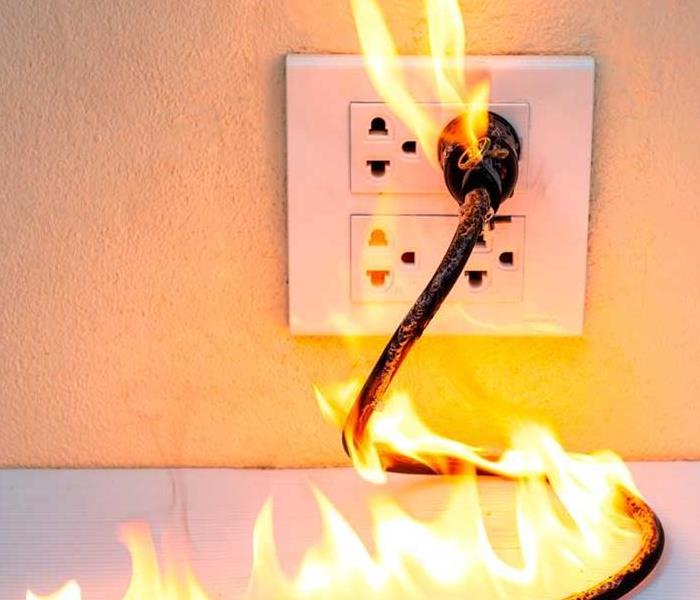 Cleaning up after a fire is a critical step in the restoration process. Many of your belongings can be saved if you treat them properly after a fire.
Cleaning up after a fire is a critical step in the restoration process. Many of your belongings can be saved if you treat them properly after a fire.
A fire in your house in can have a large impact on your property. Not only is the building affected, but the belongings inside are often damaged as well. Even if the flames do not touch these items, smoke can cause problems, particularly for electronics. The following are some steps you can take to salvage these important devices during fire cleanup.
1. Unplug or Turn Off Your Devices
If any of your electronics are still on, turn them off if it is safe to do so. If smoke has gone inside of these objects, it can carry soot and contaminants throughout the devices. Heat and air circulation can make it easier for corrosion and permanent damage to occur if they are still on.
2. Clean the Exterior
While smoke damage can be more devastating to the inside of your devices, you should still take care to remove any residue from the outside. A wet rag is often enough for the exterior of objects with hard surfaces.
3. Drain Wet Electronics
If the fire was severe, then a hose was likely used to put out the flames. In this case, a cleanup and restoration service will need to remove water from the building before fire cleanup begins. Affected devices should be drained and dried as quickly and thoroughly as possible.
4. Have Them Inspected and Repaired
Whether they have been affected by water or smoke, your devices can be irreparably damaged if you attempt to use them before these elements have been completely removed. It is best to bring them to a professional for an inspection and any necessary repairs to make sure they are safe to use.
Fire cleanup is an important step in the restoration process. Many of your belongings can be salvaged after a fire, if they are treated in the right way. With the help of professionals, you can have your electronics ready for use again in no time.
Fire Damage: The Do's and Don'ts
8/2/2022 (Permalink)
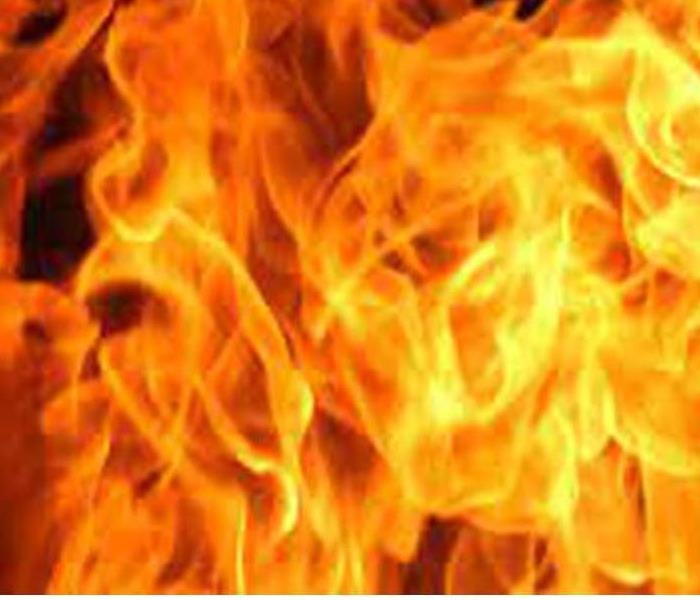 Call SERVPRO Northwest Long Beach after your home or business experiences a fire. (562)506-4992
Call SERVPRO Northwest Long Beach after your home or business experiences a fire. (562)506-4992
A fire can be one of the most devastating things to a home. Not only is there the damage from the fire itself, but often water is used to put out the fire, which can cause additional damage. If you have experienced a fire in your home, it is important to know what to do and what not to do to minimize the damage.
The DO's
- Make safety a priority: Your safety and your family's safety should be your number one priority after a fire. Be sure to check for any structural damage to your home before re-entering and be aware of any potential hazards.
- Call a professional: Once you have ensured that everyone is safe, the next step is to call a professional fire damage restoration company. They will be able to assess the damage and start restoring your home.
- Call your insurance company: As soon as possible after the fire, you should call your insurance company and let them know what has happened. They will be able to help you determine what coverage you have and what steps you need to take next.
- Make a list of damaged items: Once the fire is out and it is safe to enter your home, make a list of all the items that were damaged by the fire. It will be important when you are making an insurance claim.
- Take pictures: If possible, take pictures of the damage. It will provide documentation for your insurance claim.
- Clean up what you can: Once you have documented the damage, start cleaning up what you can. It will help prevent further damage and will make the repair process easier.
- Be very careful when walking around your home. There may be loose floorboards or other hazards that you cannot see.
- Take advantage of any resources your local community may offer. Many communities have resources available to help homeowners who have experienced a fire. These resources may include temporary housing, financial assistance, or counseling services.
The DON'Ts
- Please don't enter your home until it is safe: Until the fire department has declared it safe, do not enter your home. There could be structural damage that makes it unsafe to enter.
- Don't try to clean up on your own: Many people think they can save money by cleaning up the damage themselves. However, this is not recommended. Cleaning up fire damage is a complex process and, if done wrong, could cause further damage. It is best to leave it to the professionals.
- Don't throw away damaged items: Until you have talked to your insurance company, do not throw away any items that were damaged in the fire. They may be able to be repaired or restored, and you don't want to get rid of something that your policy could cover.
- Don’t use any fans or air conditioners until you have consulted with a professional restoration company. Fans and air conditioners can spread soot and smoke damage if they are not correctly used.
If you have experienced a fire in your home, follow these dos and don'ts to minimize the damage and call SERVPRO Northwest Long Beach. Also, be sure to call your insurance company as soon as possible so they can help you through the process.
Fire Damage Restoration
7/15/2022 (Permalink)
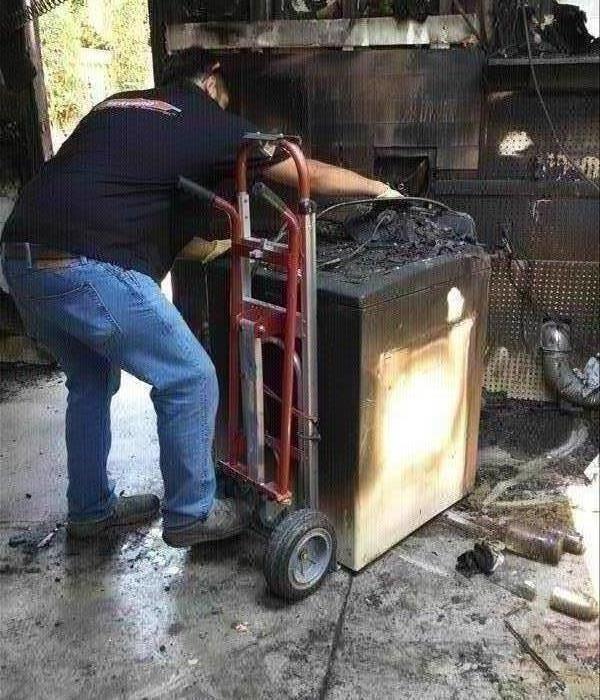 Have Questions about Fire, Smoke, or Soot Damage?
Call Us Today – (562) 506-4992
Have Questions about Fire, Smoke, or Soot Damage?
Call Us Today – (562) 506-4992
If you are experiencing a fire, call 911 immediately! Once you know that you and your loved ones are safe and that the fire has been terminated, it’s time to assess the damage. Our fire response specialists have years of experience restoring homes and offices that have experienced fire damage. Fire damage restoration is a process of cleaning up fire debris, smoke stains, and even water that may have been used to put out the fire. Often, restoration includes extensive work to walls, flooring, and countertops. Our certified professionals have the tools and know how to repair heat, smoke, and water damage. Beware of these common ways a fire can start in your home:
Protein Fire: Beware of the Protein Fire. This is the most common type of fire. You’ve left food in the oven and the stove burns, leaving a strong burnt odor and smoke residue on surfaces and walls nearby. Avoid this by always being in the kitchen when cooking.
Complex Fire: The Complex Fire involves natural or synthetic household items leaving black smoke residue on materials and surfaces. For example, you’ve left an uncovered pan cooking on the stove and suddenly you have stains on your walls. Try to move burning items away from walls and surfaces and never leave a fire unattended.
Natural Fire: Be careful of burning trees, shrubs, and plants. They can easily penetrate your home and cause damage.
Furnace Malfunction: Check your heating appliances regularly. Malfunctioning appliances such as furnaces and bedroom heaters can create smoke and potentially start a fire.
Have Questions about Fire, Smoke, or Soot Damage?
Call Us Today – (562) 506-4992
Smoke Detectors: Vital Information and Maintenance to Prevent Fire Damage
7/13/2022 (Permalink)
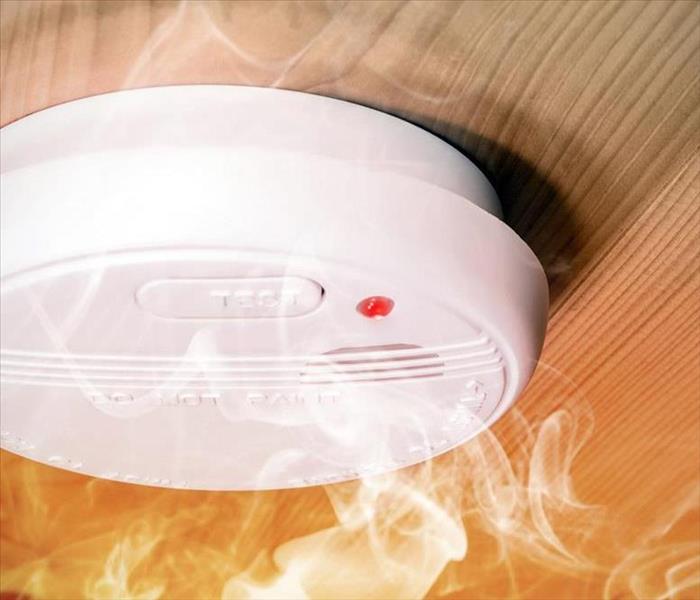 Smoke Detectors are vital to prevent fire damage
Smoke Detectors are vital to prevent fire damage
Smoke and fire damage can ravage structures and your personal property. A swift reaction can help you mitigate the impact of the damage, and some household goods can be salvaged if cleaned and treated immediately. One of the safest ways to protect your family and business is installing smoke detectors. It is vital to ensure that you have working smoke detectors, keeping in mind that heat, fumes and vapors are culpable for causing threatening damage. The following information is crucial in preventing fire at your home.
First off, it is important to note that photoelectric and ionization smoke alarms are the best for protection. Install them at every level of your home but not near windows, doors or ducts. In case you have a deaf person in the house, it is advisable to install an alarm that vibrates or has a flashing light. Smoke alarms should be mounted 4-inches away from the ceiling’s highest point.
Maintenance
For maintenance, smoke detectors should be tested on a monthly basis. The batteries should be replaced when the alarm starts chirping. It is also advisable to replace the smoke alarms at least every ten years. In case you wish to roast some barbeque while enjoying a cigar with your buddies, you should consider replacing your smoke alarm with one that has a “hush button”. In this manner, you do not have to remove the battery every time you cook. Make fire detector maintenance your emergency disaster plan.
Benefits of Installing Fire Detectors
Smoke detectors help prevent smoke inhalation which is the leading cause of fire-related issues. They also help in early fire detection which renders you have enough time to seek safety. You can also circumvent damage to property which often require large investments and time to repair. Lastly, a fire alarm is easy to install and boosts your safety and security, whether you are at home or not.
Fireworks and Fire Damage
7/1/2022 (Permalink)
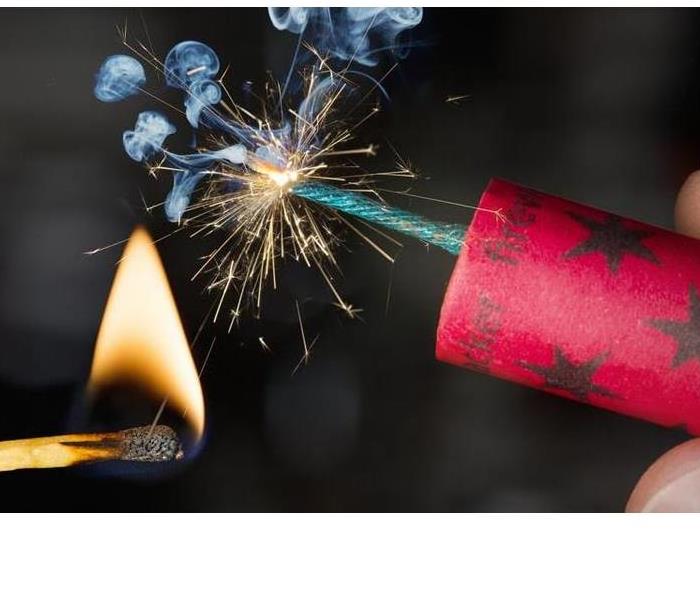 lighting a firework
lighting a firework
This Independence Day, whether you're lighting up fireworks or the grill, here are some tips to ensure your holiday is safe. Use and share these tips to maximize the safety of you and your loved ones this 4th of July.
- Only use fireworks outdoors and away from buildings on a flat, level, fireproof surface free from debris.
- Read and follow all safety labels and instructions.
- Have a water supply and water bucket available at all times.
- Light only one firework at a time.
- Never place any part of your body directly over a firework.
- Never throw fireworks or light fireworks in your hands.
- Never pick up or try to re-ignite a firework that fails to light.
- Never carry fireworks in your pockets or shoot them from a container.
- Always have adults light fireworks. Keep all fireworks, including matches and lighters, away from children.
- Allow discharged fireworks to sit for at least 20 minutes before submerging them fully in water for at least 10 minutes. Dispose of drained products in a plastic bag.
Be Prepared. Be Safe. Be Responsible.
Have Questions about Fire, Smoke, or Soot Damage?
Call Us Today – 562-506-4992
Fire damage or smoke damage? Call SERVPRO
6/28/2022 (Permalink)
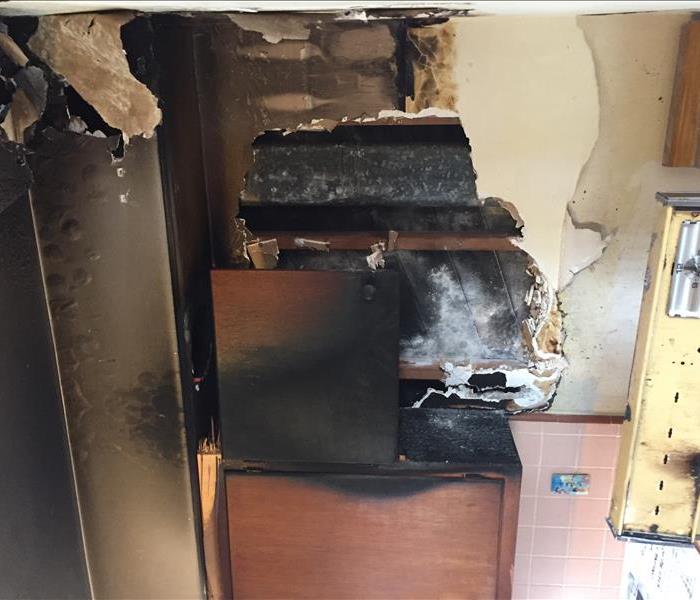 Oven fire destroys most of kitchen
Oven fire destroys most of kitchen
Fire damage or smoke damage? Call SERVPRO!
Restoring your home or business after fire damage to "Like it never even happened." is our main goal. As a leading fire damage restoration company, we specialize in fire and water damage restoration, removal of smoke odors, and deep-cleaning soot from walls, carpets and upholstery. From kitchen fires to furnace puff backs, We will clean smoke and soot damage and restore your property to its original condition. We even remove water from fire fighting efforts and treat against mold.
What Is Fire Damage Restoration?
Fire damage restoration removes acidic smoke and soot damage from your property, leaving it exactly as you remember it.
Board up the windows and doors to seal and secure the property.
- Water Extraction and Dry Out
We pump or vacuum standing water or sewage from the affected areas.
Remove smoke and soot stains from surfaces and materials.
Deodorize and disinfect the area to prevent odors and mold from developing.
Rebuild the affected area to its original condition.
Common Causes of Fire Damage
• Small Kitchen Fires
• Candles
• Smoking
• Oil or Grease Fires
• Electrical Fires
• Lightning Strikes
• Smokey Oven Fires
• Malfunctioning or Improper Use of Space Heaters
• Improper Fireplace Maintenance
• Malfunctioning Electric Blankets
• Fireworks
Dealing with fire damage
1/25/2021 (Permalink)
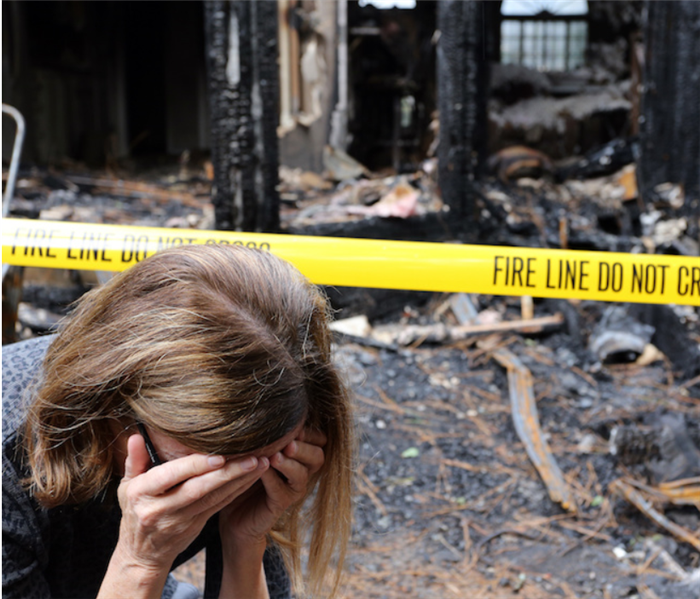 Dealing with fire damage.
Dealing with fire damage.
We should mention that every situation will be different depending on the severity of the fire damage incident, the bigger and hotter the fire the more difficult it will be in removing smoke odor as higher temperatures cause the pores of materials to open up more and thus absorbing more of the smoke odor. However, proper smoke odor removal will entail a combination of tactics including cleaning, deodorizing, and sealing of materials.
Basics you should know about fire damage restoration: The process involved will definitely differ depending on the severity and size of the fire and damage caused. However the principles of fire damage restoration will for the most part be the same. Like in most restoration projects the main goal we are trying to reach is preloss condition, that is you want your property to be restored back to how it was before the damages occurred; you want it to be safe, clean, free of smoky odors, and of course looking like It never even happened.
Fire Damage
8/14/2020 (Permalink)
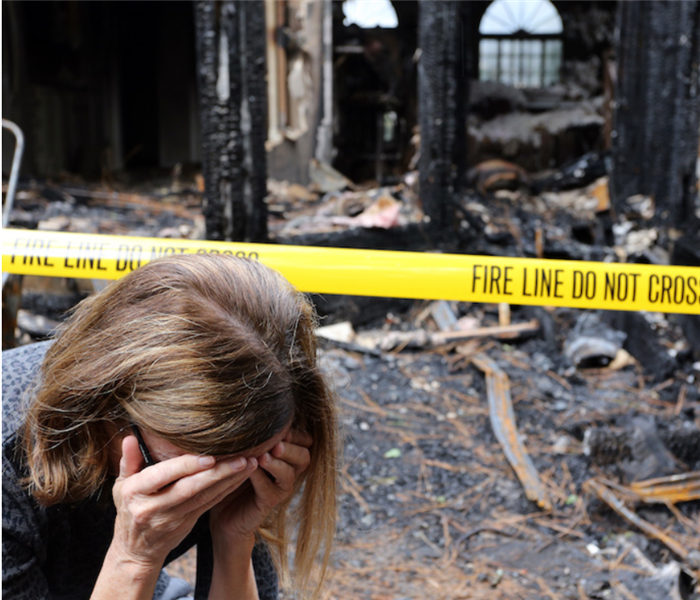 What to do after fire damage.
What to do after fire damage.
There’s been a horrible disaster at your business property, a fire! In order to minimize business interruption and additional recovery costs, the restoration process must begin as soon as possible. The best way to do this is to count on the professionals to assess the damage and get to work quickly so that business can resume as normal.
5 ways to get rid of smoke smell
1- Air out the place as soon as is safe and possible
2- Make the area to have positive air pressure by bringing the outside to force in the inside to leave outside.
3- Get rid of the items that are not salvageable and clean the salvageable items with proper chemicals.
4- Wash all the items that are washable including.
5- Call the professional restoration company SERVPRO NORTHWEST LONG BEACH which have industrial cleaning equipment and the training how to deodorize and clean all the affected areas.
Hose fire recovery
6/10/2020 (Permalink)
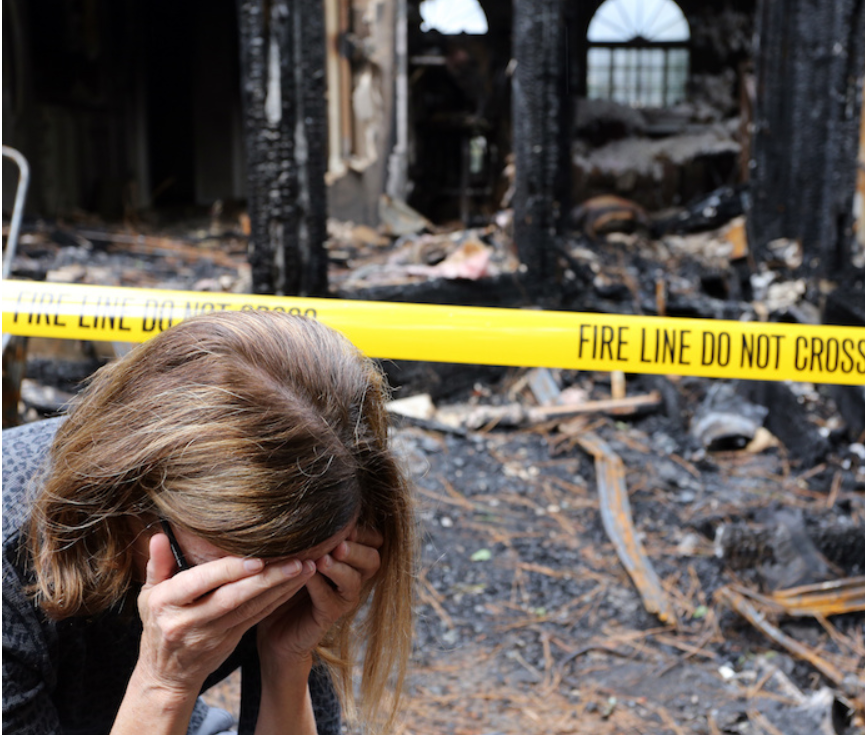 Fire Damage
Fire Damage
Though having a fire safety plan is the most important thing to consider for your household, knowing how you will navigate the stress of the recovery process is also important to consider.
Keeping yourself safe and organized is the most important thing, and to help reduce the stress, we have put together our top tips for recovering from a household fire.
Top Tips for Recovering From a Household Fire
Prepare yourself for what to expect. The damage from house fires is always unique, but it can be shocking to see if you are not expecting it. Making sure you are aware of the fact that smoke and soot can travel extreme distances throughout your home and that firefights can often lead to broken glass or holes in walls will help you know what to expect before you go in.
Wait to enter your home. It is a natural reaction to want to immediately assess and begin mitigating the damage, but you should never go back into a building after a fire until officials have deemed it safe. Damaged buildings can be hazardous as their structures may have been compromised, so going back in prematurely can put you at further risk.
Contact your insurance company. Insurance companies all vary on how they handle claim filing, which is why it is important to get in touch with yours early on to understand the process and maximize your claim.
Document the damages. Keeping thorough documentation of the damages will help you stay organized throughout the whole process, which will be helpful for you and for your insurance company. We recommend going room by room and taking photos of the damages, and making a detailed inventory list so you do not accidentally forget something in the complications of the process.
Contact your restoration company. Experiencing a fire in your home is a traumatic event for your family, which is why we recommend working with a reputable restoration company so you can return back to normal as quickly as possible. Knowing you can count on the company you have chosen will help you stress less throughout the entire process and enjoy your home once again once it is restored.
If your home is damaged in a house fire, you can count on us to help you. Get in touch at any hour for a quick response with SERVPRO of Northwest Long Beach.
Lessening Fire Risks as a Business Owner
2/20/2020 (Permalink)
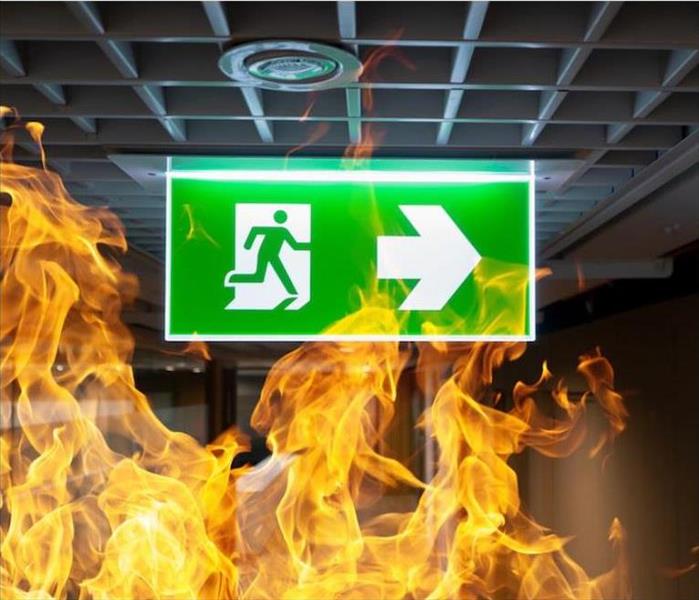 Fire damage in your business
Fire damage in your business
Planning for the unpredictable is an important part of owning your own business, especially in regards to planning for emergencies such as fires. A fire can devastate a business if it is not adequately prepared, but a little bit of fire safety can drastically reduce the associated risks. Making sure that your business is following fire safety protocols is essential to mitigating the likelihood of a fire occurring.
Performing fire safety planning ahead of time by adhering to codes, identifying risks and preparing employees will help make sure that you and your staff are safer and help you recover in a fire’s aftermath. Commercial fires can happen at any time, so planning for a variety of scenarios is key.
Tips to Reduce Your Business’ Fire RisksFollow code guidelines and inspection schedules. Knowing fire safety codes for businesses set up by the National Fire Protection Association is a great launching point for fire safety. Inspecting equipment on schedule and adhering to the other fire safety standards is an extremely important part of fire risk reduction that should be taken seriously.
Identify your specific risks. Not every business has the same fire risk profile as others, meaning it is important to be aware of the things specific to your business that might increase the likelihood of a fire. Consider equipment and supplies that could be fire starters and make sure you have contingency plans in place surrounding these items.
Create (and practice) a fire evacuation plan. Fire alarms can quickly cause a panic among employees who are not adequately prepared, so if you have on-site staff, it is important to get ahead of this. Hosting regular fire escape drills will solidify the evacuation plan in everyone’s mind so that they are able to react quickly and calmly in a real world fire event.
Have regular fire safety seminars with staff. Drills are a wonderful place to start, but general fire tips should also be reviewed often. Helping staff know how to increase their fire safety throughout their daily routines will reduce your chances of experiencing a fire to begin with and make sure everyone feels more prepared.
If your business has experienced a fire, we’re here 24⁄7 to respond and begin restoration. Call us today to learn how we can help you.
Household Fire Safety Tips
1/23/2020 (Permalink)
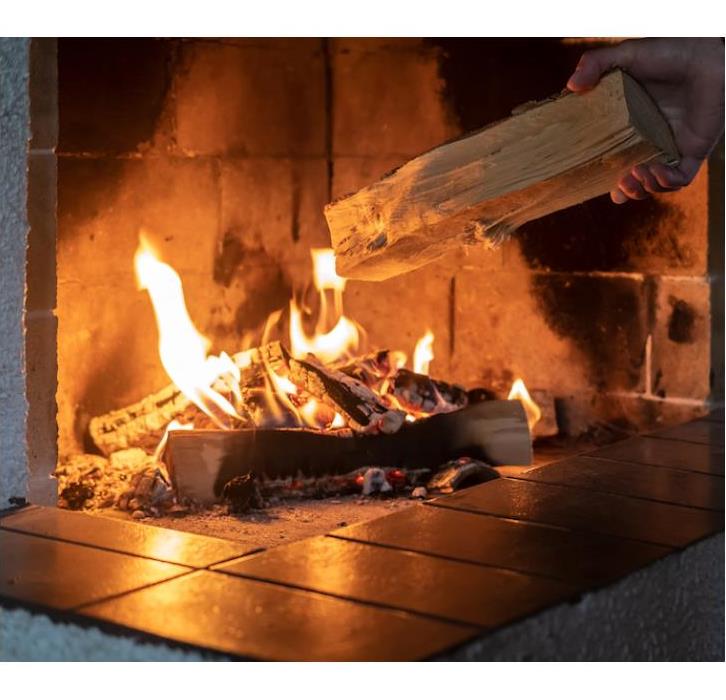 Household Fire Safety Tips
Household Fire Safety Tips
A house fire can happen in an instant, causing unprecedented devastation and loss. While there are many reasons a house fire can break out, quite a few of the common causes are fully preventable, provided some fire safety knowledge is implemented around the house.
To help households stay safe from fires and prepare for what they will do in a worst-case scenario, we wanted to take the time to put some of the most pressing fire safety tips in one place so they are easily accessible for local families.
The Most Important Tips for Fire SafetyFrequently Check Smoke Detectors. Installing smoke alarms in bedrooms and on every floor of the house is one of the best fire safety decisions one can make. By having these in the home and testing them monthly to ensure they are operational, you can dramatically decrease your fire risk.
Have a Fire Escape Plan. Creating a plan for what to do if a fire alarm sounds is the next step in fire safety. All rooms should have two designated exits, and family members should know where to meet up with one another after they escape.
Know How to Operate a Fire Extinguisher. Buying and learning how to operate a fire extinguisher is a great way to prepare for putting out a fire before it becomes a disaster. Make sure to research the different classes so you are getting the one that will best suit your family’s needs.
Never Leave Flames Unattended. There are many objects in the home that use open flames, such as fireplaces and stovetops. It is important to never forget that these can pose a fire risk—any open flame can travel in an instant, leading to a situation that can grow out of hand if there is no one nearby.
Keep a Closed-Door Policy. A fire that starts in the night will typically be the most dangerous because of the reduction in reaction time for those who are asleep. Keeping bedroom doors closed at night is one of the safest things to do, as it can slow down the flames’ spread dramatically and give everyone more time to escape.
If you’d like to learn more about protecting yourself from a house fire and how our restoration services can help you recover, get in touch today to learn more.
Prevention guide for house fires
8/12/2019 (Permalink)
House fire flames can spread rapidly, causing large-scale damage in moments. Not only can house fires be catastrophic for your property, but they can also put members of the household in danger as well. While there is no way to fully guarantee you will never be impacted by a house fire, taking precautions for prevention can help.
Frequency Statistics for House FiresHome fires occur far more often than most might estimate—almost three times a minute as reported by the NFPA.
Cooking continues to be the No. 1 culprit in starting house fires, but of course there are many other reasons a fire could start.
Prevention Tips for House FiresOnce flames start, they can spread instantly and become unmanageable. Understanding tips for preventing house fires can reduce the likelihood of that happening. These household actions will help you prevent fires:
Performing smoke alarm checks. Most smoke alarms have a test button, allowing you to check batteries, which is recommended once a month. The full unit is recommended to be replaced every 10 years.
Clearing your dryer tray. Lint collected from the dryer may appear to be a household inconvenience, but it can be quite dangerous as well. As the dryer heats the clothes, it can also heat the lint tray and lead to combustion.
Watching open flames. As quickly as flames can spread, it is never a good idea to leave them unattended.
Maintaining cables and cords. Wires that are under stress or bending often may experience premature fraying, which can be a fire hazard. Replace them when they become frayed.
Protect household supplies. Aerosol cans and other everyday household items can be highly flammable—check the label if you are unsure. Protect these flammable products from heat and light as much as possible.
If your home has suffered damage from a house fire, give us a call. We are certified in fire and soot remediation, and here to help 24⁄7.
Fire damage
6/6/2019 (Permalink)
One of the reasons you should call us first when disaster strikes is that we get there faster, but that is not the only reason why we should be one of your first calls if the worst should occur.
When it comes to your property, our technicians have a “restore first” mentality, which is aided by the use of specialized equipment and cleaning techniques. This mentality also helps reduce the interruptions to life and helps get your home or business back to pre-disaster condition.
Fire Damage and RestorationKnowing the first steps to take after a fire has damaged your property is daunting, but that’s why we are here! Once you contact us, our team springs into action.
Because every fire damage event is different, our highly trained team will develop a unique solution that is tailored to your needs; however, the general process remains the same.
Here are the steps that are included in our process:
1. Emergency contact. Once you’ve made the initial contact with us, you will be asked to answer a series of questions regarding the fire damage. This helps us make sure our team is dispatched with the appropriate equipment and resources.
2. Inspection and fire damage assessment. When our team arrives on the scene, they will inspect and test adjoining rooms of the property to determine the extent of fire, smoke and soot damage. This helps us determine the right plan of action moving forward.
3. Immediate board-up and roof-tarp service. Because fire damage can compromise windows, walls and roofs, we will make sure that your property is secure and protected from further damage by boarding up missing windows and walls and placing a tarp on damaged roofs.
4. Water removal and drying (if water damage is present). Since water damage is a byproduct of fire damage, we immediately begin the removal process for all wet items. Dehumidifiers and air movers are brought in to remove the remaining water and finish up the drying process.
5. Removal of smoke and soot from all surfaces. Through the use of specialized equipment and techniques, we are able to remove smoke and soot from ceilings, walls and other surfaces.
6. Cleaning and sanitizing. If it is possible, we continue our “restore first” approach by cleaning restorable items and structures. Not only will they be cleaned, but industrial air scrubbers and fogging equipment are used to help remove odors.
7. Restoration. This is our final step in the process of getting your property back to pre-fire condition. Restoration can include minor repairs like replacing drywall, painting and installing new carpet. It could also call for major repairs like reconstruction of damaged areas.
Remember, if you need us, we’ll be there—no matter the time or day. The team of highly trained restoration experts at SERVPRO® of Northwest Long Beach is available for emergency cleanup and restoration services 24 hours a day, seven days a week.
Prepping Your Business for Potential Disasters
5/13/2019 (Permalink)
As a business owner, there are a multitude of things that must be taken care of when running your business. However, probably one of the most important factors to think about is emergency preparedness.
You never know when or if an emergency will occur. While having a plan in place cannot stop all disasters, it can still give you and your employees peace of mind where safety is concerned and ensure that your employees know what to do if a disaster or emergency situation should occur.
Making a PlanHave you taken the time to sit down to draw up an emergency preparedness plan for various disaster situations? If not, it should be a priority!
We have listed below some of emergencies your business should have a preparedness plan in place for, including:
- Fire
- Severe weather, including thunderstorms and winter storms
- Other natural hazards like floods, hurricanes, tornadoes and earthquakes
- Human-caused hazards, including accidents or acts of violence
- Technology-related issues like power outages and equipment failure
Whether it’s a man-made incident or one created by a natural disaster, if there is no emergency plan for your business, the situation could become quite stressful quickly.
Make sure safety training and familiarization of emergency preparedness plans are included in the company onboarding process, team-building activities and continuing education opportunities. By helping employees familiarize themselves with proper safety protocol and emergency procedures, you’re not only giving them the tools to protect themselves, but you are also setting them up to help protect guests/visitors and the business itself.
Where to StartFirst evaluate which situations would be most likely to occur when you begin to set up an emergency plan for your business, including even the unlikely longshots that could still happen. After all, it’s better to prepare for any worst-case scenarios and not be caught off guard.
There are plenty of online resources to help guide you through this process, including Ready.gov, the American Red Cross, FEMA and the CDC.
Have a business impact analysis (BIA) done, which will aid in the prediction of the potential effects a disaster may have on your business. This would include lost or delayed sales and income, increased expenses from repairs, and delayed implementation of business plans. Don’t forget to make sure a crisis communications plan is in place, too.
Perform regular drills once you have come up with an emergency preparedness plan, and be sure to review it and practice it with employees. Reviewing and rehearsing various scenarios can help ensure the process remains fresh in their minds and can help employees feel more empowered.
Disaster can strike when you least expect it, but by being prepared and having a plan in place, your business will be better suited to handle whatever Mother Nature has in store. If the worst should happen and your business is damaged, know that SERVPRO® of Northwest Long Beach is here to help make it “Like it never even happened.”
Fire damage in Long Beach / Signal Hill
4/21/2019 (Permalink)
Why it is important to act immediately when you have a fire damage
When a fire occurs in a home or a business, the aftermath can seem overwhelming, and if fire restoration is delayed, the destruction from smoke damage can become even worse. The longer you wait to address the damage, the more repairs you'll have to fix - which means you'll most likely have a larger bill for damages when all is said and done. You can avoid costly repairs and long-term issues if you make fire damage restoration a priority and follow the steps, you'll need to get your home or business back to normal as soon as possible.
Contact a Licensed Fire Damage Restoration Company
Most important step - find a fire restoration contractor who can assess the damage, give you an estimate on costs and start the cleanup process. Contact your home insurance company to make them aware of the fire and ask them for referrals for reliable businesses in your area. It's essential that you enlist the help of a licensed and insured fire damage restoration company to reduce the risk of further damage to your home. They are trained to handle this type of damage and many will perform some of the following steps to help get you through the initial fire cleanup:
While it's best to have a qualified fire restoration company handle the smoke damage restoration, there are some small tasks you can do to help minimize the initial damage before the professionals come in to do the major cleanup. Remember that safety comes first, so if there’s no way to safely gain access into your home, then stay out until the professionals arrive. If it is possible to enter your house, make sure you’re wearing work gloves, long sleeves/pants, and proper respiratory protection, such as a mask because exposure to soot can cause respiratory problems and other medical issues.
We perform a thorough cleanup using industrial-grade products and equipment, such as dry-cleaning soot sponges to remove loose soot and specialized vacuum filters to clean carpet and upholstery. 562-506-4992
Tips to a Safe & Successful 4th of July
6/18/2018 (Permalink)
During the 4th of July, family and friends gather around for food, festivities, and fun. However, dangers such as fireworks, sparklers, bonfires, and barbeques become a possibility during this time.
When building a bonfire, only use dry material and make sure that all debris is at least 10 feet away. To extinguish a fire, pour water on all embers until the hissing sounds stop. Remember to keep a fire extinguisher nearby when dealing with bonfires or grills, and always keep children and animals away from these areas.
While most kids love playing with fireworks, it is important to never toss or throw the fireworks. If dealing with fireworks, please consider the following safety tips and suggestions.
- Wear protective eye and hand gear
- Never carry fireworks in your pockets
- Always have a bucket of water nearby
- Keep unused fireworks in a closed box
- Make sure all spectators are 25 to 40 feet away
We hope these tips well help you have a wonderful, fun and safe holiday!
If you do have a fire know that SERVPRO of Northwest Long Beach is a call a way to come and
Since each smoke and fire damage situation is a little different, each one requires a unique solution tailored for the specific conditions. We have the equipment, expertise, and experience to restore your fire and smoke damage. We will also treat your family with empathy and respect and your property with care.
Have Questions about Fire, Smoke, or Soot Damage?
Call Us Today – 562-506-4992
Safety Tip – Fire Extinguishers in the Home
5/28/2018 (Permalink)
Cooking fires are the number one cause of home fires and fire injuries. The National Fire Protection Association (NFPA) reports that 3 out of 10 house fires start in the kitchen. It is recommended to keep a fire extinguisher in or near the kitchen area.
You want to make sure it is a good size that it is large enough to handle a small fire in your home, but not so large that it is difficult to handle. You want to make sure it is a multi-purpose extinguisher that can handle almost any house fire situation. We recommend an ABC rated extinguisher. What does ABC mean?
- Class A: for ordinary combustible materials, paper, wood, and most plastics
- Class B: for flammable or combustible liquids
- Class C: for electrical equipment
If you don’t take a training course for operating a fire extinguisher, remember these few steps using the acronym PASS: Pull, Aim, Squeeze and Sweep.
- Pull the pin. Hold the extinguisher with the nozzle pointing away from you and release the locking mechanism.
- Aim low. Point the extinguisher at the base of the fire.
- Squeeze the lever slowly and evenly.
- Sweep the nozzle from side-to-side.
- If the fire re-ignites, repeat the last 3 steps.
Now that you have your new fire extinguisher and know how to operate it, make sure to store it in a readily accessible area such as a kitchen cabinet. Remember, your fire extinguisher is a good first response to a fire in your home but be sure to call your local fire department and have a fire escape plan if the fire gets out of control.
Have Questions about Fire, Smoke, or Soot Damage? Call Us Today – 562-506-4992
The Dangers of Letting Smoke Go Untreated
4/4/2018 (Permalink)
 A fire in a garage cause by an electrical shortage.
A fire in a garage cause by an electrical shortage.
Fire and smoke damage can wreak havoc to your personal property and structures. A quick reaction can help you minimize the impact of the destruction as some of your household goods can be cleaned and salvaged if treated immediately. You should, therefore, hasten the process of hiring a professional to help you manage the damage in a correct manner. Conversely, if left untreated, smoke and fire damage can be more devastating in the following ways:
Restoration cost increases
If smoke goes untreated for a long time then the odors become more persistent and more difficult to neutralize and will make the treatment process harder and more time consuming and ultimately more expensive.
Major damage
Smoke and ash can mix with water to produce a very corrosive element that will slowly corrode away walls, floors, ceilings and any other surfaces in your home. Cleaning up quickly with soap and water is not enough. It requires proper cleaning with appropriate chemicals to remove it completely.
Soot Residue
Neutralizing the soot residue and deposits is an effective first clean up step. If left for long, soot can easily travel and invade rooms that weren't affected by the fire.
Permanent damage
Your property can suffer permanent damage if not treated in a timely manner. Damage begins to set in within hours and prolonged exposure may cause permanent harm to your walls which turns yellow, metal surfaces begins to corrode, clothes stain permanently and wooden furniture which may need refinishing. It also damages the floor which may need replacement.
Following a fire, it is necessary to seek smoke treatment immediately to save yourself from the effects of prolonged exposure to smoke and to make it easier for you to restore your home.
Have Questions about Fire, Smoke, or Soot Damage?
Call Us Today – 562-506-4992
Christmas Tree And All Other Fires Move Fast
11/25/2017 (Permalink)
 In Less Than 20 Seconds This Room Can Not Be Entered
In Less Than 20 Seconds This Room Can Not Be Entered
If you are ever faced with a fire, CALL 911! This film was produced by the National Institute of Standards and Technology, and presents how seconds count in protecting human life. We first watched this film for our Community Emergency Response Team Training from FEMA. Fire moves at amazingly fast speeds, and must be extinguished properly based upon materials burning... in less than 20 seconds the room pictured can not be entered because of temperatures and air quality.
Always call for emergency services 1st. Keep a fire extinguisher in key locations throughout your house. Train everyone on escape routes and where extinguishers are located... and yes, how to use the extinguisher.
Hopefully, none of us will ever have this experience, but if we do these tips can save lives. For additional information call us at 562 506 4992, we will provide you an excellent brochure on the Do's and Don'ts of emergencies... sometimes what you DON'T do is even more important than what you do.
https://www.nist.gov/
Fire Can Affect Multiple Lifes
11/25/2017 (Permalink)
 Attached Housing, Home Owner Associations, and Commercial Property Pose Special Challenges When Emergencies Occur
Attached Housing, Home Owner Associations, and Commercial Property Pose Special Challenges When Emergencies Occur
The expansion of attached housing, large Commercial/Apartment buildings, and Homeowner Associations have added many important considerations to safety and fire prevention/containment. A neighbors fire may create substantial smoke and water damage to neighbors.
It is highly beneficial to know what steps Associations have take... if none, it is very wise to open that discussion. Establish what has been done for fire containment, what prescribed and alternative escape routes are in place... And tested all. Know what insurance is in place for the Association, what individual insurance exists, what plans are in place if cleanup and repairs are ever needed... under any circumstance.
Then call SERVPRO of Northwest Long Beach and ask about the benefits of SERVPRO Emergency Ready Plans. A no charge service performed to help provide a plan for when emergencies occur. 562 506 4992
Community Emergency Response Teams (CERT)
11/16/2017 (Permalink)
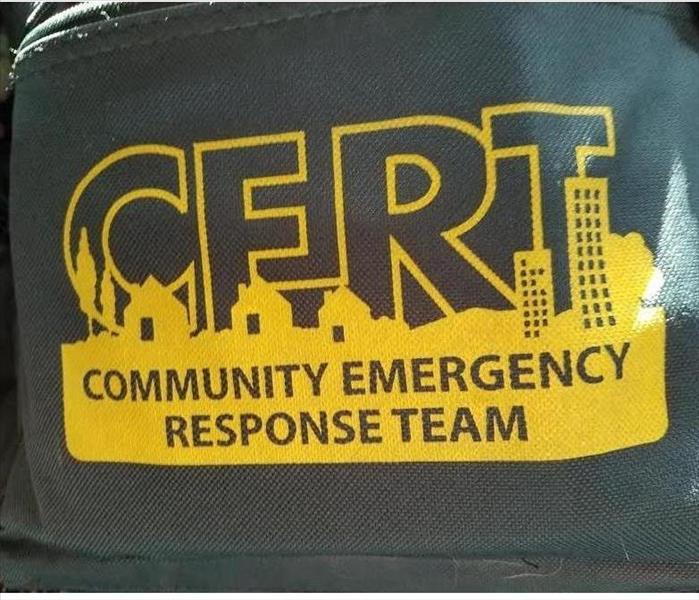 The Community Emergency Response Team program is an opportunity for each of us to make our neighborhoods safer.
The Community Emergency Response Team program is an opportunity for each of us to make our neighborhoods safer.
Community Emergency Response Teams (CERT) | Ready.gov
When disaster hits, many times the only resource available to help is your neighbor.
The Community Emergency Response Team (CERT) program helps train people to be better prepared to respond to emergency situations in their communities. When emergencies happen, CERT members can give critical support to first responders, provide immediate assistance to victims, and organize spontaneous volunteers at a disaster site. CERT members can also help with non-emergency projects that help improve the safety of the community.
The CERT course is taught in the community by a trained team of first responders who have completed a CERT Train-the-Trainer course conducted by their state training office for emergency management, or FEMA's Emergency Management Institute (EMI). CERT training includes disaster preparedness, disaster fire suppression, basic disaster medical operations and light search and rescue operations.
Learn more by visiting your local Fire Station or the CERT website. BE PREPARED!
http://www.SERVPROnorthwestlongbeach.com/employee-photos
Related
Smoke and Soot Damage Can Cause a Pervasive Odor in Your Los Angeles Home.
4/12/2017 (Permalink)
 Fire prevention needs to be an everyday endeavor!
Fire prevention needs to be an everyday endeavor!
Smoke and soot is very invasive and can penetrate various cavities within your home, causing hidden damage and odor. Our smoke damage expertise and experience allows us to inspect and accurately assess the extent of the damage to develop a comprehensive plan of action.
Smoke and soot facts:
- Hot smoke migrates to cooler areas and upper levels of a structure.
- Smoke flows around plumbing systems, seeping through the holes used by pipes to go from floor to floor.
- The type of smoke may greatly affect the restoration process.
Different Types of Smoke
There are two different types of smoke–wet and dry. As a result, there are different types of soot residue after a fire. Before restoration begins, SERVPRO of Northwest Long Beach will test the soot to determine which type of smoke damage occurred. The cleaning procedures will then be based on the information identified during pretesting. Here is some additional information:
Wet Smoke – Plastic and Rubber
- Low heat, smoldering, pungent odor, sticky, smeary. Smoke webs are more difficult to clean.
Dry Smoke – Paper and Wood
- Fast burning, high temperatures, heat rises therefore smoke rises.
Protein Fire Residue – Produced by evaporation of material rather than from a fire
- Virtually invisible, discolors paints and varnishes, extreme pungent odor.
Our Fire Damage Restoration Services
Since each smoke and fire damage situation is a little different, each one requires a unique solution tailored for the specific conditions. We have the equipment, expertise, and experience to restore your fire and smoke damage. We will also treat your family with empathy and respect and your property with care.
Have Questions about Fire, Smoke, or Soot Damage?
Call Us Today – 562 506 4992

 24/7 Emergency Service
24/7 Emergency Service















